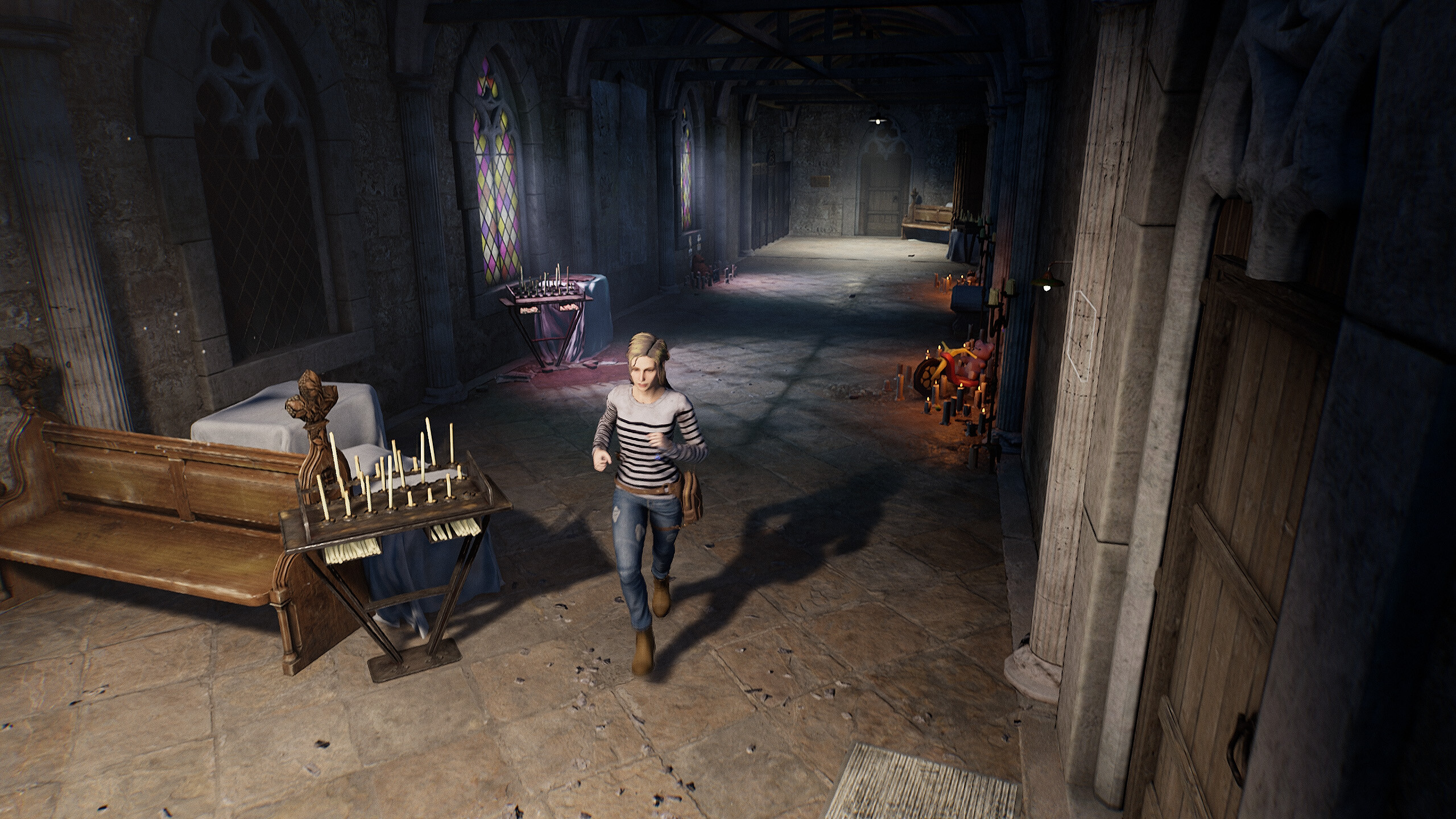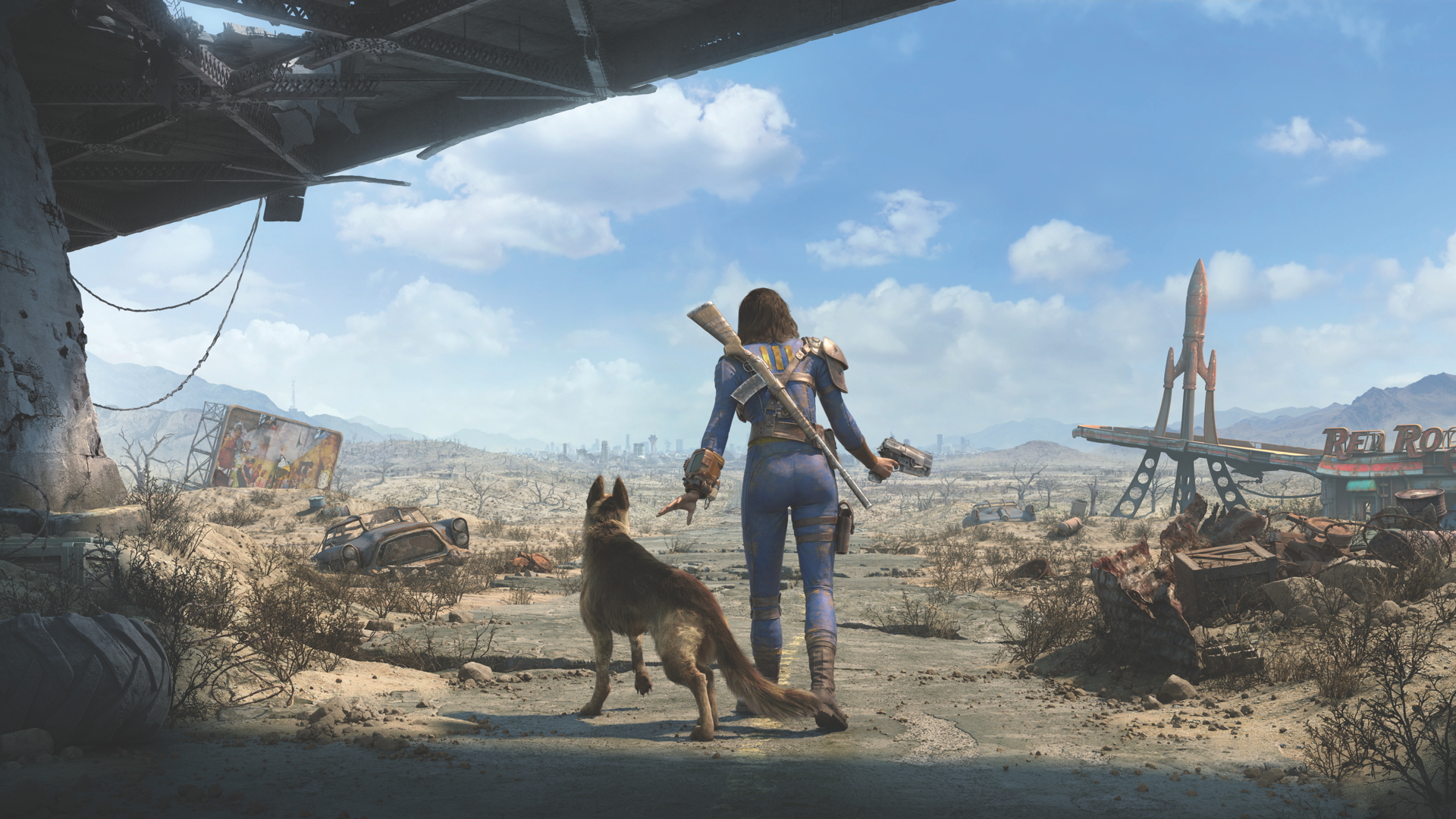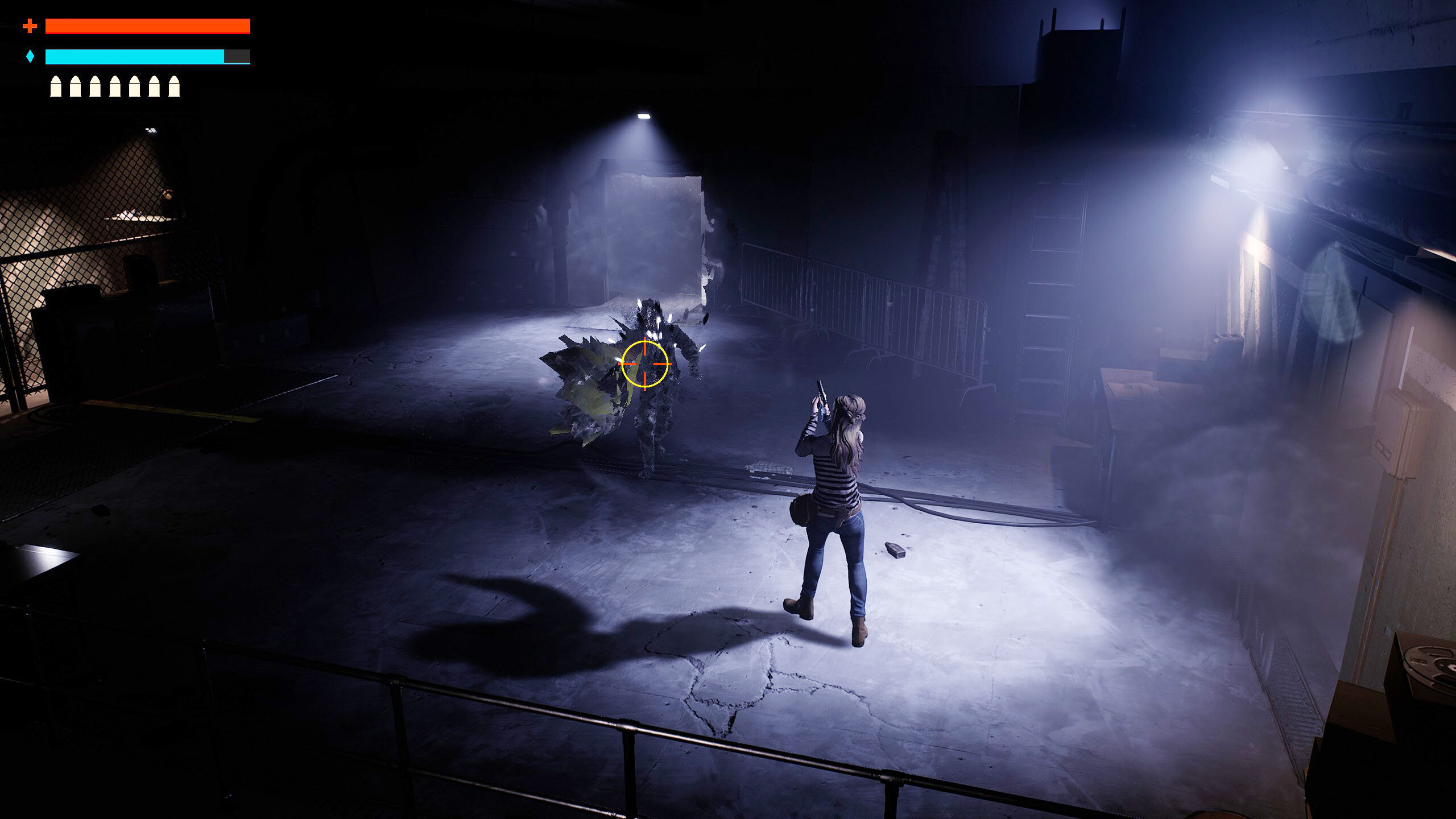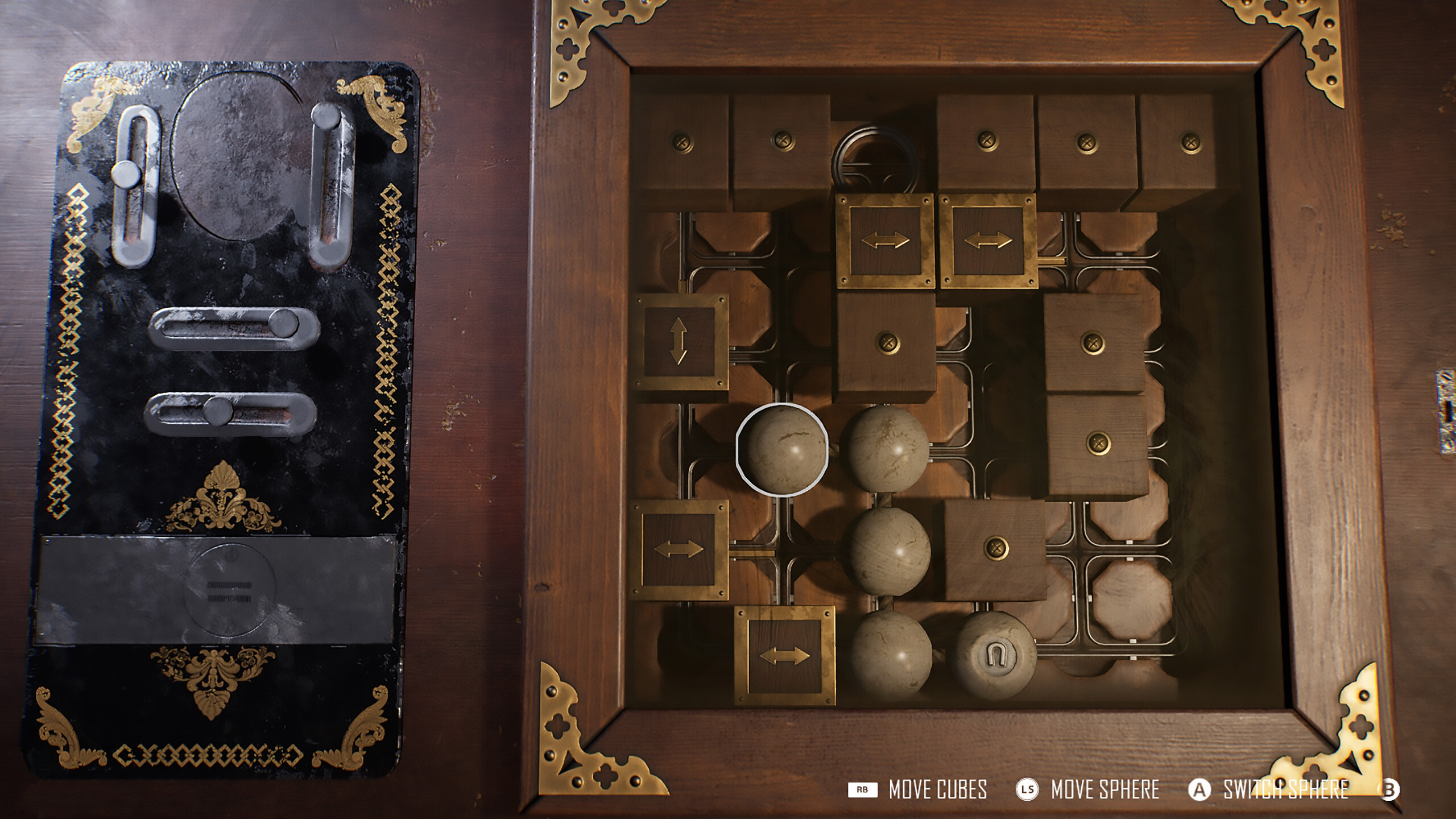Broken Pieces is a retro thriller in the same vein as Parasite Eve and old-school Resident Evil
From its fixed cameras to Hitchcock-esque isolation – Broken Pieces nails early '00s nostalgia

Broken Pieces could exist somewhere on Parasite Eve's timeline. If it swapped out its protagonist for George Stobbart, it could be at home in the Broken Sword universe. If it threw in some shambling zombies, an infectious plague, and a smattering of hamfisted voice acting, it'd fit well with early Resident Evil games. Quite often, you are literally alone in the dark. And so if it were a movie, its masterful use of isolation as a storytelling mechanic could draw loose comparisons with Hitchcock and Welles.
Inspired by a clearly-defined era as it may be, however, Broken Pieces is its own thing. It's a third-person psychological thriller set in a French coastal town that exists outside the flow of time. It's mystery-driven and is the debut game of boutique indie outfit Elsewhere Experience. It's set just after the Cold War, and tasks players with investigating a ritualistic cult, and the strange supernatural presence that haunts the Saint-Exil region. It's also wedded to a fixed camera perspective – a defining feature of late '90s/early '00s horror games – so much so, its creators had to fight for their inclusion during the development process.
"It's definitely a throwback, but there's a real pleasure in static, fixed cameras," says Elsewhere Experience's Mael Vignaux. "When we were trying to get a publisher, we had some negative feedback about the game's controls. It's not that the controls are bad, it's that the fixed camera views are different, and are something we don't really see anymore. We had feedback saying 'we love the graphics, we love the audio, we love the story… but the camera angles aren't for us'. Marketing-wise, we understand the decision, but we had to fight for fixed cameras. Artistically, that was something we really wanted, and we didn't see the game existing in any other way."
Explore the floor


It's said to the point of cliche that prominent video game settings are as much a character of their stories as the characters themselves. The likes of BioShock's Rapture, Resident Evil 2's RCPD headquarters, Breath of the Wild's slant on Hyrule, and Elden Ring's The Lands Between immediately spring to mind, but there's a case to be made for the importance of just about any game setting as it's tied to its story. In Broken Pieces, the same can be said of its fixed cameras – because not only do they drive its nostalgic feel, they also dictate exploration and combat throughout the game's nine to 12-hour runtime.
Similar to the likes of Microids' Syberia series, players have the option to switch between a primary fixed view, a secondary fixed view, and a temporary temporary first-person view, but all told the use of static cameras forces you to peruse every corner of the map to locate key items and pathways. Personally, I love this because it makes the simple act of exploring feel vital to success. When you inevitably hit a stumbling block or a dead end in your quest, you find yourself retracing old ground, seeking out every overshadowed nook and cranny, double, triple and quadruple checking you haven't missed a key item that might help pull you out of a hole.
From the developer's side, fixed cameras help with artistic direction. Vignaux adds: "It's great to see players feel compelled to explore more against how the static camera shows off the map. But with this static camera, we can direct where we want the player to look, and what we want them to see. We're afforded more liberties on our end in terms of where we direct the player, but equally, if the player sees a wall, they'll quite often follow the wall all the way to the end, afraid that they'll miss items or doorways if they don't."

With such a wealth of games and genres at our fingertips today, Vignaux and the Elsewhere Experience team are looking to the past to stand out in the present. Despite once being a central tenet of the survival horror and thriller games Broken Pieces is so inspired by, the very fact that Broken Pieces so steadfastly operates fixed camera perspectives in 2022 makes it stand out in today's busy market. With the likes of Resident Evil pivoting to first-person perspective in recent years, and with classic reimaginings such as the upcoming Bloober Team-led Silent Hill 2 remake ditching static cameras for the perceivably more popular over-the-shoulder view, Broken Pieces, somewhat ironically, feels retrospectively fresh.
Weekly digests, tales from the communities you love, and more
Vignaux himself cut his teeth in the fixed camera era of the late '90s and early '00s, and says that players of similar grounding now generally find themselves with less time to play video games. Cutting through the myriad distractions of day-to-day life with something that stands them apart from the crowd, then, was a key consideration here. "Players value their time, and we value the player's time," says Vignaux. "And if you want players to spend time with your game, you have to make something that will catch their eye and hold their attention. I think that requires tailored marketing, and while we ourselves are developers, we do what we can. We've had our share of both positive and negative feedback in different areas, but we don't see much negative feedback about our use of fixed cameras – that appears to be pretty well accepted. We could have dropped fixed cameras during development, but I have no regrets with our decision to keep them."
The next adventure

"We wanted to do something very specific in Broken Pieces, and so much of that was built around static, fixed cameras. For our next game, I think we're going to try and be less niche."
As for the future, Elsewhere Experience plans to take everything it's learned over the course of Broken Pieces' development and launch, and do everything it can to spread its wings wider while remaining committed to what it believes in from an artistic standpoint. Whether or not fixed camera views are part of that process remains to be seen, but standing out from the crowd remains vital through Vignaux's eyes.
He says: "We wanted to do something very specific in Broken Pieces, and so much of that was built around static, fixed cameras. For our next game, I think we're going to try and be less niche. We're already in an era where we are fighting against so many things – we have to fight against games as a service, we have to fight free-to-play, and we just want to tell a story with a bit of innovative gaming. It's very hard, and when you try to have something unique, it takes a lot of effort. Perhaps a hybrid approach is the answer. I wouldn't be against creating something with some pieces of static camera – maybe you have some rooms or some puzzles that involve 30 cameras. I think that would be nice."
And just like that, I'm sold. As someone who adored the likes of Parasite Eve 2, Resident Evil 1 through 4, Team Silent's Silent Hill games, and Broken Sword's pivot to 3D in 2003's The Sleeping Dragon, Broken Pieces really struck a chord with me – and I suspect players of a certain vintage will feel the same. For those among us unfamiliar with games that operate a fixed camera perspective, Broken Pieces might take a bit of getting used to, but if storytelling, exploring and tension-building are your cup of tea, then there's plenty to enjoy here.
Broken Pieces is out now on PC via Steam and the Epic Games Store, Xbox Series X and S, and PS5.

Joe Donnelly is a sports editor from Glasgow and former features editor at GamesRadar+. A mental health advocate, Joe has written about video games and mental health for The Guardian, New Statesman, VICE, PC Gamer and many more, and believes the interactive nature of video games makes them uniquely placed to educate and inform. His book Checkpoint considers the complex intersections of video games and mental health, and was shortlisted for Scotland's National Book of the Year for non-fiction in 2021. As familiar with the streets of Los Santos as he is the west of Scotland, Joe can often be found living his best and worst lives in GTA Online and its PC role-playing scene.


